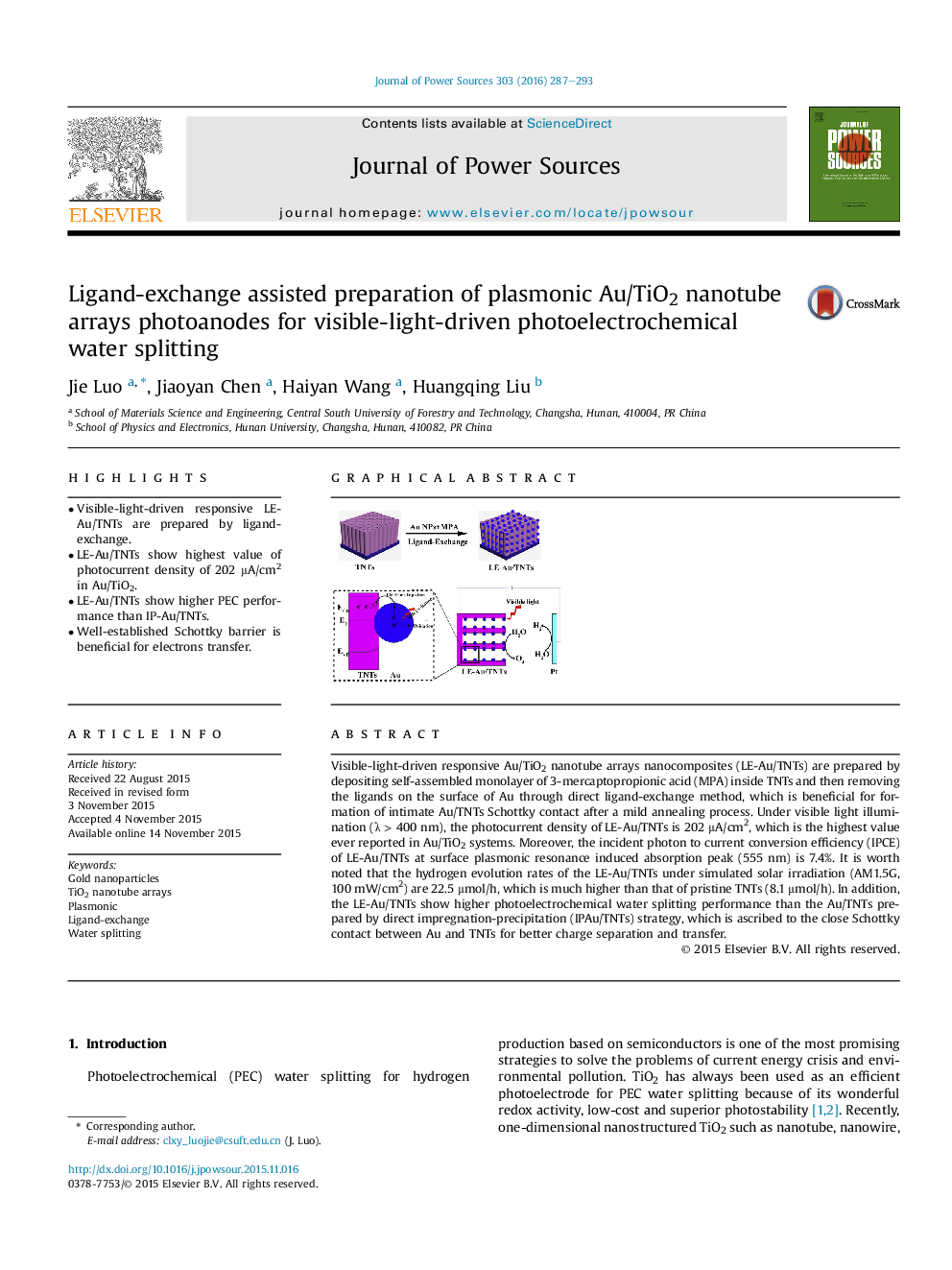| Article ID | Journal | Published Year | Pages | File Type |
|---|---|---|---|---|
| 1285762 | Journal of Power Sources | 2016 | 7 Pages |
•Visible-light-driven responsive LE-Au/TNTs are prepared by ligand-exchange.•LE-Au/TNTs show highest value of photocurrent density of 202 μA/cm2 in Au/TiO2.•LE-Au/TNTs show higher PEC performance than IP-Au/TNTs.•Well-established Schottky barrier is beneficial for electrons transfer.
Visible-light-driven responsive Au/TiO2 nanotube arrays nanocomposites (LE-Au/TNTs) are prepared by depositing self-assembled monolayer of 3-mercaptopropionic acid (MPA) inside TNTs and then removing the ligands on the surface of Au through direct ligand-exchange method, which is beneficial for formation of intimate Au/TNTs Schottky contact after a mild annealing process. Under visible light illumination (λ > 400 nm), the photocurrent density of LE-Au/TNTs is 202 μA/cm2, which is the highest value ever reported in Au/TiO2 systems. Moreover, the incident photon to current conversion efficiency (IPCE) of LE-Au/TNTs at surface plasmonic resonance induced absorption peak (555 nm) is 7.4%. It is worth noted that the hydrogen evolution rates of the LE-Au/TNTs under simulated solar irradiation (AM1.5G, 100 mW/cm2) are 22.5 μmol/h, which is much higher than that of pristine TNTs (8.1 μmol/h). In addition, the LE-Au/TNTs show higher photoelectrochemical water splitting performance than the Au/TNTs prepared by direct impregnation-precipitation (IPAu/TNTs) strategy, which is ascribed to the close Schottky contact between Au and TNTs for better charge separation and transfer.
Graphical abstractFigure optionsDownload full-size imageDownload as PowerPoint slide
